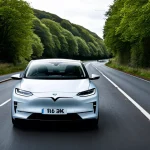Economic significance of the used car market in the UK
The used car market UK plays a crucial role in the country’s broader automotive landscape. Its economic contribution extends beyond simple vehicle sales, influencing employment and financial turnover significantly. Used car sales form a substantial segment of the automotive industry impact in the UK, often rivaling new car sales in volume and value.
This sector supports thousands of jobs, from sales personnel in dealerships to specialists in servicing and vehicle refurbishment. These roles are vital in sustaining the employment levels within the automotive industry impact, providing opportunities across various skill levels. The diverse employment generated also reflects the sector’s wide reach in the UK economy.
In parallel : How Is the Rise of Electric Vehicles Shaping the Future of UK Roads?
Financially, the used car market UK boasts impressive turnover figures. While new vehicles generate substantial revenue, the volume and demand for used cars often result in comparable overall financial contributions. Consumers frequently turn to used cars for affordability and choice, bolstering the sector’s resilience and importance.
Understanding the economic contribution of the used car market UK highlights its pivotal role in sustaining the country’s automotive ecosystem, making it a cornerstone of both employment and financial activity.
Also to read : How are UK car manufacturers improving sustainability through AI?
Influence on new car sales and manufacturing
Used vs new car sales in the UK reveal a clear dynamic: widespread availability of used cars often reduces demand for new vehicles. When buyers turn to affordable, pre-owned options, new car sales can slow. This shift directly impacts car manufacturing, as reduced orders force manufacturers to adapt production plans accordingly.
UK car manufacturers closely monitor these trends to anticipate changes. If consumers favor used cars, factories may scale back output or delay introducing new models. This approach helps prevent excess inventory and financial strain. Conversely, a rise in new car interest can trigger ramped-up production, benefiting local supply chains and employment.
Consumer purchasing behavior is pivotal. Many buyers prioritize cost-effectiveness, causing fluctuations between used vs new car sales UK. Preferences for technology, warranties, and sustainability also influence choices. Understanding these patterns enables manufacturers to tailor offerings, introducing innovations or financing options that appeal to evolving demands.
In summary, the interplay between used and new vehicle sales shapes the automotive market trends and production strategies in the UK, with consumer behaviors driving this balance.
Dealership strategies and business adaptation
The UK car dealerships landscape is shifting rapidly, driven by evolving used car market trends. To stay competitive, dealerships are adopting innovative automotive retail strategies that emphasize agility and customer-centric approaches. One key area of adaptation is stock management and inventory sourcing. Dealers are leveraging data analytics to predict demand more accurately and source vehicles that align with buyer preferences, reducing excess inventory and holding costs.
Integration of digital platforms is another crucial strategy. More UK car dealerships now offer seamless online sales experiences, allowing customers to browse, configure, and even finalize purchases remotely. This blend of physical and digital retailing meets modern consumer expectations for convenience and transparency.
By blending traditional showroom engagement with advanced digital tools, dealerships can optimize operations and expand their reach beyond local markets. These strategies not only increase sales potential but also build stronger customer relationships through personalized services and efficient service delivery. Embracing technological innovation and flexible inventory tactics is essential for car dealerships to thrive amidst changing market dynamics.
Pricing, supply dynamics, and consumer effects
Understanding recent trends in used car prices UK reveals a complex interplay between supply and demand. Over the past months, stock levels have fluctuated due to factors like semiconductor shortages impacting new vehicle production. This scarcity in new cars has increased demand for used vehicles, pushing prices upward across the market.
Market forces driving these fluctuations include limited supply chains and changing consumer preferences. Dealers face reduced availability of trade-ins, tightening the used car inventory further. Simultaneously, rising inflation and economic uncertainty influence consumer spending power, affecting their purchasing decisions in the consumer market analysis.
For consumers, this environment means fewer affordable options and longer waiting periods. However, savvy buyers can benefit from analyzing supply trends and timing purchases strategically. Understanding regional disparities in vehicle availability can help identify markets less affected by shortages.
In summary, the used car prices UK hinge on delicate supply and demand balances, directly impacting consumer affordability and access. Staying informed about these dynamics supports better decision-making in today’s challenging auto market. For detailed, real-time updates and expert advice, consult reputable automotive platforms regularly.
Regulatory landscape and market sustainability
Exploring the UK automotive regulations, the used car market faces several crucial government policies. Emissions standards play a significant role, as tighter limits on vehicle emissions directly affect the resale value and eligibility of older cars. Taxation policies, including Vehicle Excise Duty based on CO2 emissions, incentivize buyers to opt for cleaner, greener vehicles. These regulations shape both supply and demand dynamics within the market.
Sales routes and business compliance are also governed by a framework ensuring transparency and consumer protection. Dealers must adhere to mandatory licensing, and accurate vehicle history disclosures are essential to maintain trust. Such regulations reduce fraud risks and enhance market integrity.
The evolving focus on market sustainability presents both challenges and opportunities. Older vehicles with high emissions face restrictions in urban low-emission zones, potentially limiting market flow. However, innovation in certified pre-owned electric vehicles offers sustainable alternatives, expanding choices for eco-conscious buyers. Navigating these regulatory nuances is critical for businesses to remain viable and promote a sustainable automotive future, balancing environmental goals with consumer affordability.
Broader industry and economic implications
Understanding the automotive industry economics UK reveals a complex network of ripple effects. Changes in the used car market directly impact sectors such as insurance, finance, and aftermarket services. For example, fluctuations in used car values influence insurance premiums and loan rates, creating a chain reaction throughout financial services. Aftermarket services, including repairs and parts, also feel these shifts, affecting employment and revenue streams.
The macroeconomic impact of the automotive sector extends beyond immediate stakeholders. It influences consumer spending patterns and contributes significantly to GDP. Trends like electrification and digital retail are reshaping supply chains and investment priorities, which economists track closely in their forecasts.
Industry forecasts suggest long-term trends will reshape the UK’s automotive landscape profoundly. Expert analysis points to sustained growth in used car demand, driven by affordability and evolving consumer preferences. This will generate opportunities for innovation in financing and service models while demanding adjustments from insurers and parts suppliers.
By analyzing these interconnected factors, stakeholders can better anticipate challenges and leverage emerging trends, ensuring resilience in what remains a vital industry for the UK economy. For more detailed insights on automotive trends, explore expert perspectives on future market dynamics.





